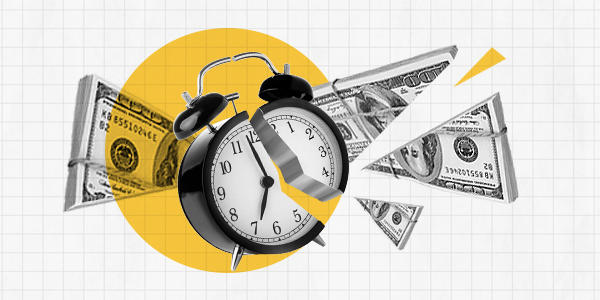Have you ever had your Fitbit run out of battery and so you're like, “If I go do my steps now, it won't count. Why bother?” A friend of mine joked that when her battery died, she lamented that, “without being on the grid right now, I don’t even exist. So instead of walking, I am going to have wine.”
This is an example of the backfiring effect of wearable devices. Today, we will explore them with a behavioral economics lens and understand the implications that BE can have on wearables and digitized healthcare solutions.
Our behavioural choices, including poor diets, inconsistent sleep, and physical inactivity, are amongst the leading causes of premature death and reduced quality of life. These behavioral choices lead to increases in the risk of developing chronic health conditions such as cardiovascular disease, type 2 diabetes, cancer, hormonal dysfunction, stress, and mood disorders.
Further efforts are needed to assist people to adopt healthier lifestyles. Digital apps and wearable activity trackers offer us promise to behavioral change.
Fortune Business Insights reports that the global market size for the fitness tracker market was $36 billion in 2020 and is expected to quadruple by 2028.
However, the overall improvements to health are not trending in the same positive direction. Over the past few years, my team at BEworks has worked with a number of clients trying to figure out why their digital products or services are not performing nearly as well as one might expect. Many of these services are designed in a way that is explicitly geared towards improving consumer and patient welfare and outcomes, and yet the impact is not always what our clients want it to be.
1. Data collection is good
First, we need to recognize – and celebrate - the fact that for most consumers, data collection is good step. Having data on hand is much better than relying on our selective memory or fault perception of intensity that hangs on to salient events and perceives them as a trend. That single long walk we did last week becomes a faulty memory of a pattern of good exercising.
2. Few mobile apps contain behavioral insights
However, while wearing a device can be helpful in motivating people to exercise and make lifestyle modifications, the challenge is that a third to half of us quit six months in – this includes those who join gyms and those who bought wearables.
Furthermore, few wearables and their accompanying apps use behavioural insights. Often what they do provide is some raw metrics such as step count and heart rate. It falls on us to interpret the data and determine if our activity is sufficient for optimal health.
Instead of teaching people about statistics though, we need behaviourally informed approaches to helpfully position data along with feedback so that we can stay motivated to achieve our goals. We need carefully considered changes to the choice architecture such as anticipated regret, implementation intentions, goal setting, up-front lump-sum loss aversion, or others nudges and boosts.
3. Knowing what data means is better
While gathering data is useful, knowing what data means is better. What it means for Diagnostics - and what it means for action. As in, I have this data, but what is it telling me?
And it turns out, we aren't so great at interpreting what data means, and we aren't good at determining the correct course of action -- because there are many psychological biases and barriers at play.
For instance, a key measure that people rely on for assessing their overall health is their weight. When we start to exercise and diet, as soon as we step on a scale, we expect to see a singular declining linear path in the data.
But the human body is more complex, and our fitness progress doesn’t move that way. You can still be on the path to increasing your overall health while there will be tremendous variance -or noise – in the data.
4. Feedback and interpretation are important
Feedback and interpretation are then important elements to behavior change. Especially since most people don’t have a good scientific understanding of things like weight - which fluctuates with healthy variance. They don’t have a scientific understanding of counts like steps -- more steps could be better but this fails to take into account intensity, and finally, people don’t have a good understanding of norms -- what is right for someone else might not be right for you.
5. The benchmarks we set are important but can be oversimplistic
Consider this commonplace benchmark – daily 10,000 steps. Why 10,000? Well, it is an arbitrary number with a limited scientific basis. It was based on a pedometer made by a clock company in the 1960s. It was derived as an approximation by estimating the typical daily steps to perform routine activities such as commuting and shopping which is about 7,000 steps, combined with 30 minutes of exercise, which was estimated to be 3,000 steps.
And so a clock company’s benchmark for good health is what lead all of us to start marching 10,000 steps a day.
The reality is that this is inadequate for some who are working towards weight loss - and it is possibly a higher, harder benchmark than it needs to be for others for maintaining health. It underreaches for some - leading to poorer outcomes, and overreaches for others. As with my anecdotal example, some people can get discouraged when they don’t meet the standard and this can affect their consistency. The simplicity of this benchmark runs the risk of reducing the very motivation it intends to create.
A final point- Steps alone are not as effective as steps with sufficient intensity. Moderate exercise can be more effective than vigorous exercise in improving health outcomes.
We are counting more than steps
And the revolution in data and tracking devices is advancing. We are moving from devices that track our steps and our sleeps and into new arenas of health intervention.
Longevity researcher doctor Peter Attia makes the case for healthy individuals wearing a continuous glucose monitor. Conventional metrics may be inadequate for catching individuals that are developing pre-diabetes. These individuals are on the precipice and it is important to catch them early.
Here the questions of interpretation become potentially even more consequential. Early detection provides the opportunity to apply behavioral changes in diet and physical activity to potentially prevent metabolic dysfunction. These monitors typically prompt patients to catalogue their meals after a glucose spike is detected.
They give wearers a daily and weekly ‘metabolic score’ to help the patient properly interpret the numbers.
If a score is low, some apps will suggest dietary and activity modifications and assess the impact of those behavioral changes. The continuous feedback and interpretation of data makes these monitors a useful tool for bringing blood glucose levels to an acceptable range, as well as reinforcing behavioral change.
BEWARE THE GIMMICKS
Finally, the market for devices for everything is exploding, and into many avenues which are unregulated. Consumers are buying into gimmicks such as brain wave modulators that give false hope about cognitive performance, anxiety, and other health challenges. We need to be careful of these developments.
As health care practitioners, as product innovators, as policy designers, as behavioral architects, as people who care about people, we need to recognize the complexities in motivation. If we want to see behavioral outcomes improve, we need to drive adoption of the tools and we need to go further with understanding users’ experience of how they interpret data. We need to look at steps that ought to be taken to improve the perceived usefulness of data, we need to address the barriers to adoption, and we need aids to improve interpretations of the data and the calls to action..










